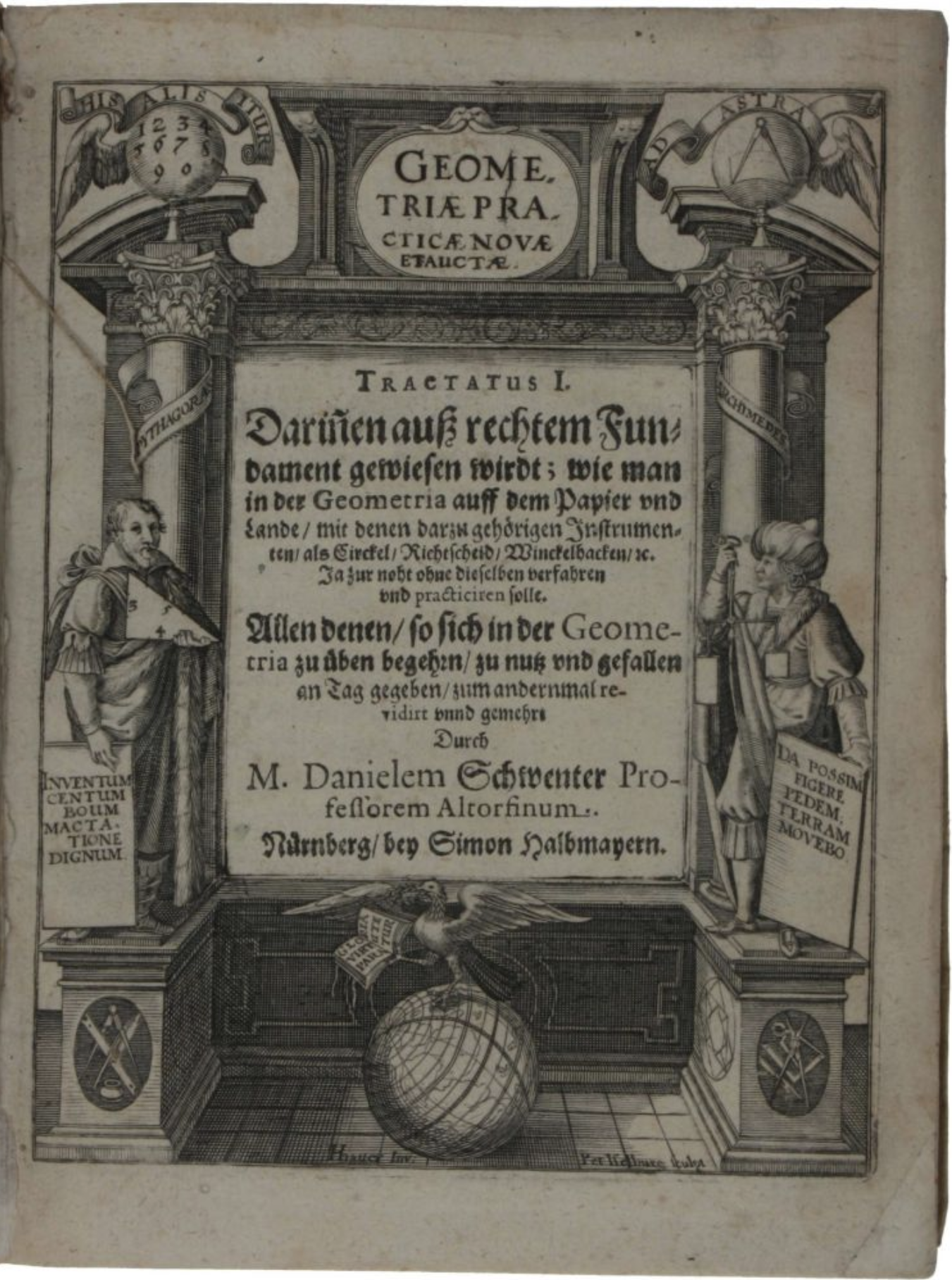Description
SCHWENTER, Daniel. Geometriae practicae novae. Tractatus I. Darinnen auss rechtem Fundament gewisen wird. Wie man in der Geometria auff dem Papier und Lande, mit denen darzu gehörigen Instrumenten, als Cirkel, Richtscheid, Winkelhacken [et]c. Ja zür noht ohne die selben verfahren unnd operirn solle . . . Tractatus II. Ohne einig künstlich Geometrisch Instrument allein mit der Messrute und etlichen Stüben das Land zu messen. Tractatus III. Mensula Prætoriana. Beschreibung dess Nutzlichen Geometrisch Tischleins, von dem fürtresslichen und weitberühmten Mathematico M. Johanne Prætorio S. erfunden; Tractatus IV. Darinnen Camilli Ravertae Mediolanensis, erfindung auss einem Standt das Land zu messen verteutscht . . . Nuremberg: Simon Halbmayer, 1627.
First complete edition and the first edition of the fourth part (the first part was published in 1616, the first three parts together in 1618). Each part has seperate title page and pagination. The first book is a treatise on general mathematics and the principles of geometry, together with the instruments that are needed to make accurate drawings – everything from protractors to the beam compass and pantograph. The second section begins with simple measuring systems and then considers elementary surveying problems that can be handled with only crude instruments (including one’s own body as one side of a triangle). The third part describes a surveying instrument (the ‘mensula praetoriana’), or plane table, created by Schwenter’s Altdorf colleague and mentor, Johann Praetorius. Schwenter also covers three sighting staffs, instruments of ancient usage from which more sophisticated devices have been developed, but which were then still in use in their original form. The fourth part is in fact a German translation of Curzio Casati’s ‘Geometricum problema’ (1602).
Schwenter shows himself to be particularly well acquainted with the contemporary Italian mathematical literature, giving in particular a resumé of some of the work of Pietro Antonio Cataldi: “The use of limited continued fractions in the expression of a relationship between large numbers is found in the ‘Geometria practica’ of Daniel Schweneter (1627), published soon after Cataldi’s death” (DSB, III, p.128).
Cantor, Vorlesungen II, pp. 666-70; Zeitlinger/Sotheran, 2nd suppl, 2421; Poggendorff II 878.
Four parts in one volume, 4to (200 x 154 mm), pp. [xii], 296; [viii], 198, [6]; [xii], 101, [3]; 83, [5], with two engraved and two woodcut titles, and two engraved portraits (some browning throughout due to the paper quality). Contemporary vellum. Liechtenstein book plate to front paste down and “Anno 1640” inscribed at top.











